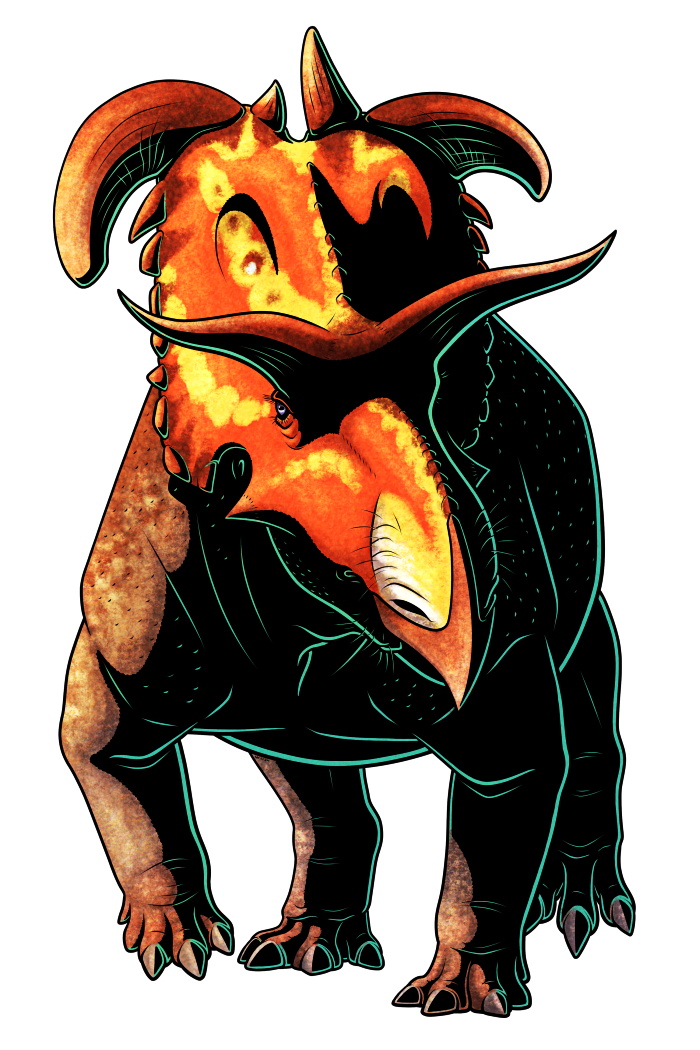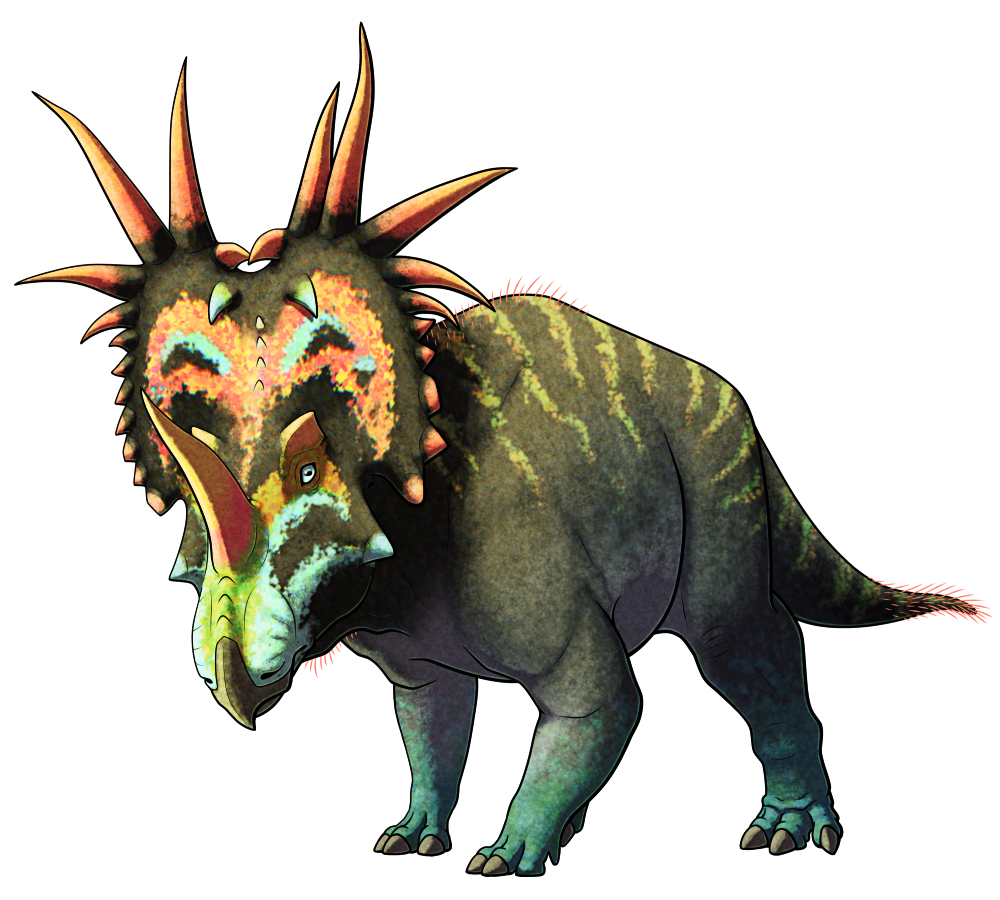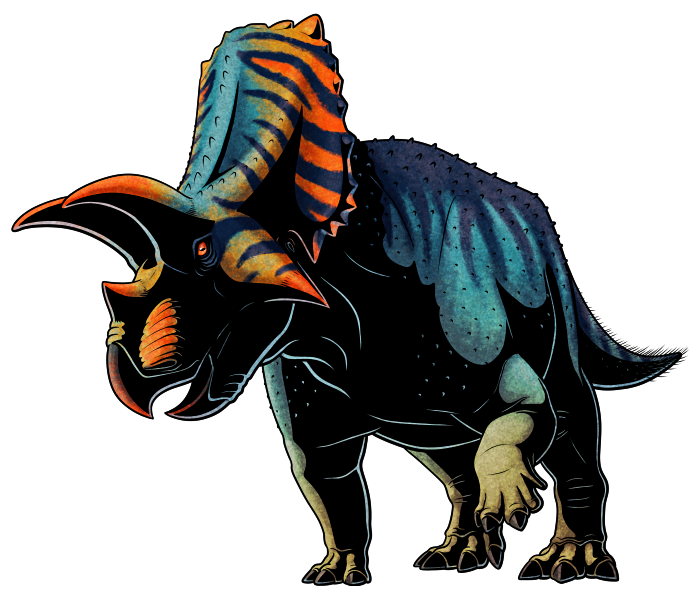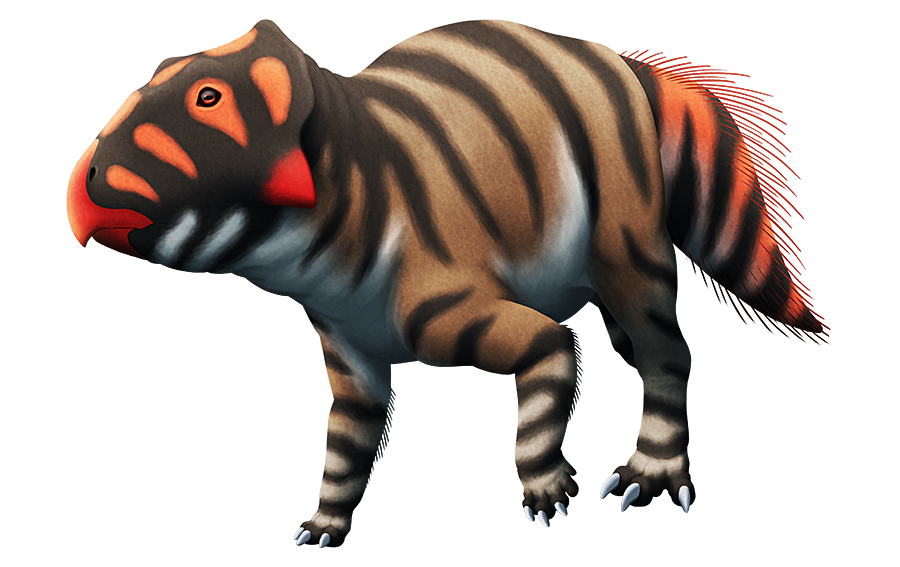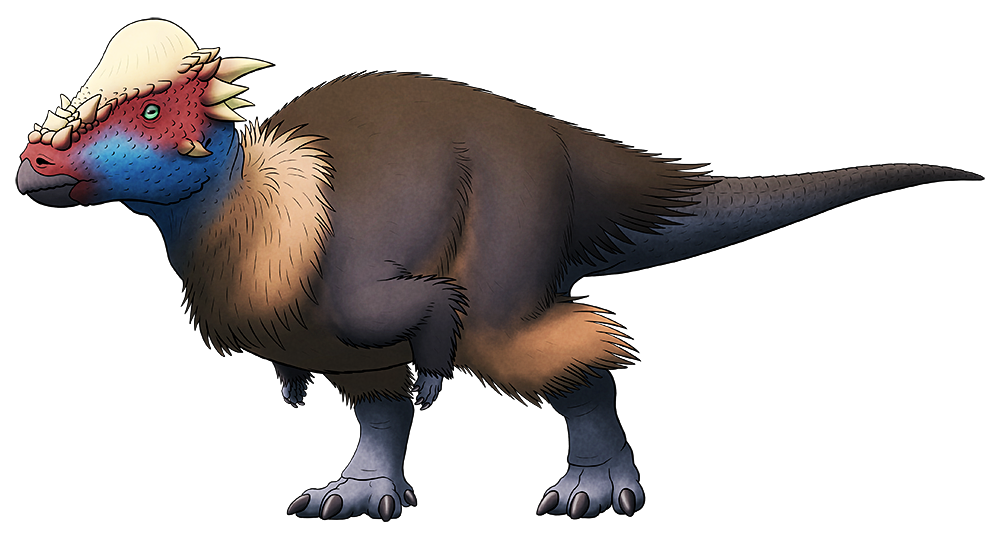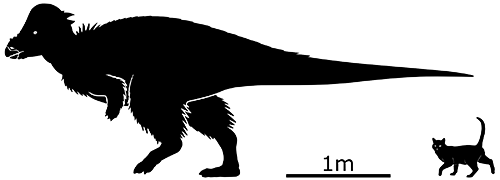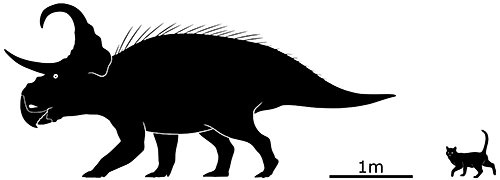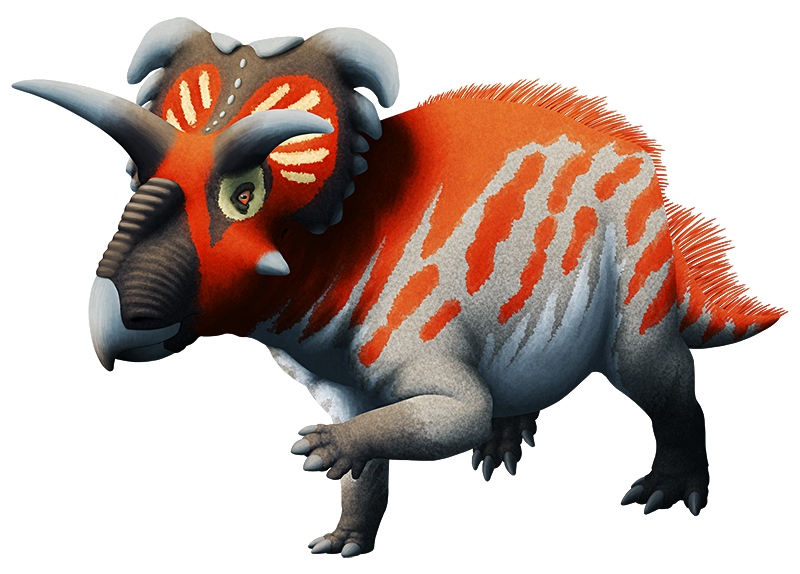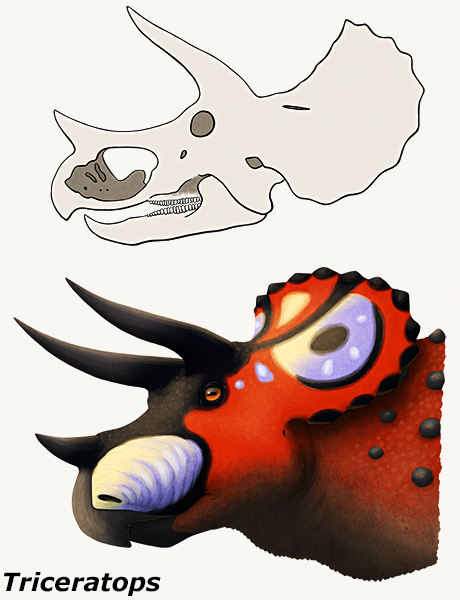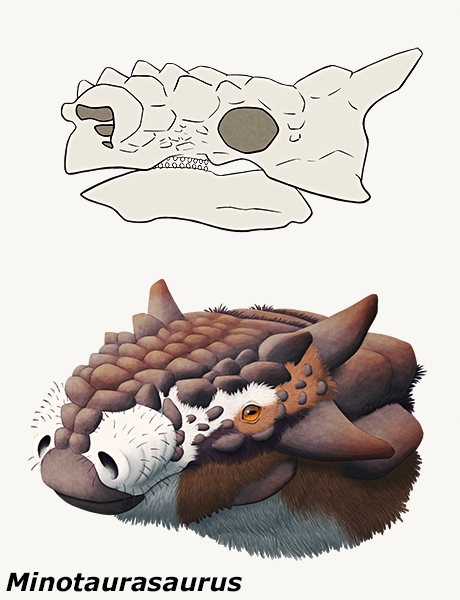Lokiceratops rangiformis was a ceratopsian dinosaur that lived during the Late Cretaceous (~78 million years ago) in what is now Montana, USA. Estimated at about 6.7m long (~22ft), it was one of the largest known members of the centrosaurine branch of the ceratopsians.
It had a unique arrangement of ornamentation on its skull, with no nose horn, two long brow horns, and a pair of huge asymmetrical curving blade-like spikes on the top of its square frill – some of the largest known frill spikes of any ceratopsian.
It lived in a swampy environment near the shore of the Western Interior Seaway, in an area that seems to have had an unusually high diversity of ceratopsians – along with Lokiceratops there were three other centrosaurines (Medusaceratops, Albertaceratops, and Wendiceratops), and one chasmosaurine (Judiceratops).
(There’s also a possibility that it might not actually be a unique species. We know some other ceratopsians’ faces changed quite drastically as they aged, so Lokiceratops could instead represent a fully mature individual of Medusaceratops.)
Continue reading “Lokiceratops”
